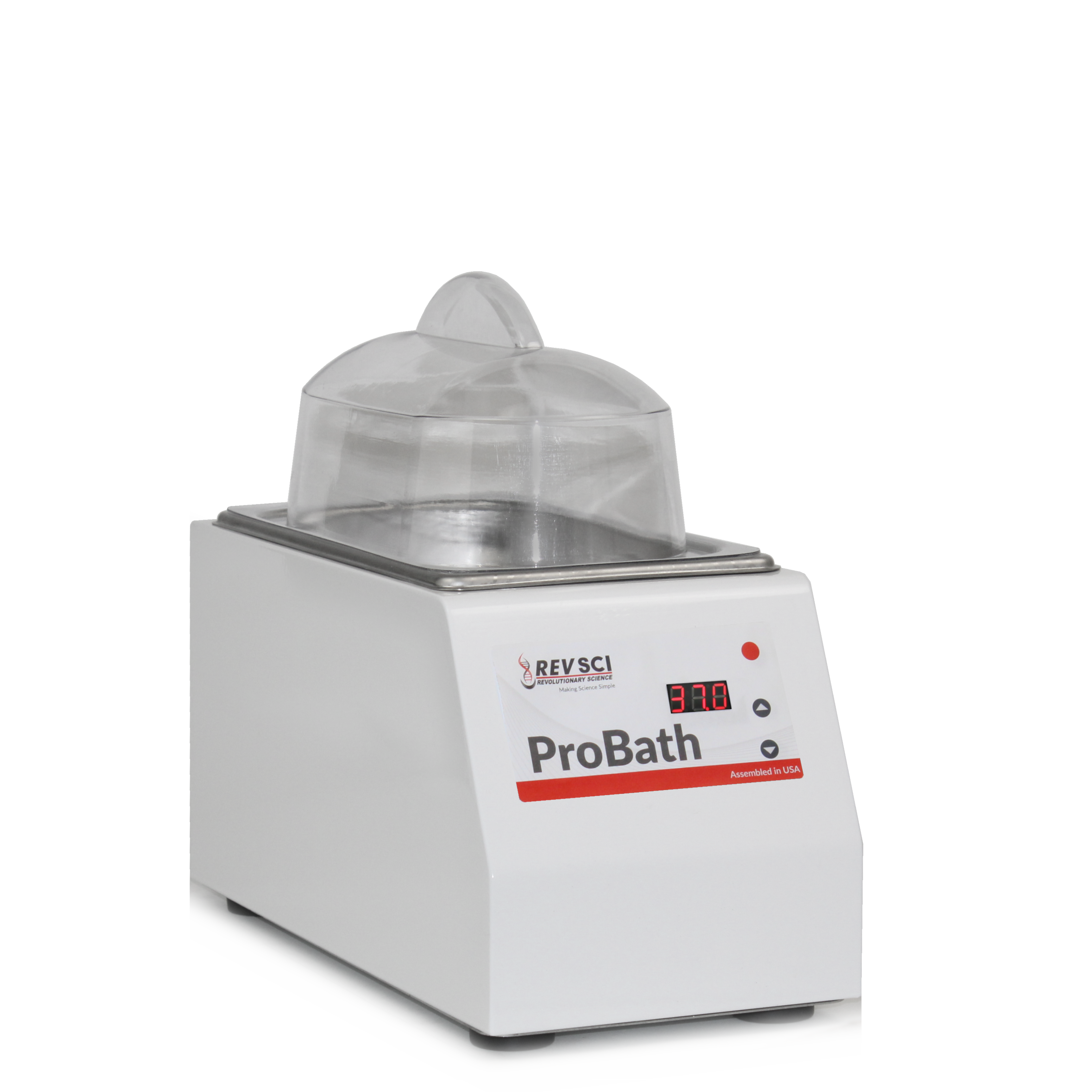Lab Water Baths Explained: Functions, Features, and How to Choose the Right One
The Essential Role of Water Baths in Laboratories
A laboratory water bath is crucial in scientific research, chemistry, and biological applications. It provides precise temperature control for various experimental processes, ensuring accurate and reproducible results.
Making the Right Choice for Your Lab Water Bath
Water baths are essential tools for temperature-controlled applications in various scientific fields. Understanding their types, features, and maintenance practices allows you to make informed decisions about your laboratory’s needs.
Choosing the proper water bath can enhance efficiency, improve experiment accuracy, and extend the lifespan of your equipment. Whether you need a standard, circulating, or shaking water bath, selecting the appropriate model is crucial to achieving reliable results. This guide will explore the functions, types, benefits, and considerations for choosing the proper water bath for your laboratory needs.
Explore RevSci’s Full Line of Lab Water Baths
What is the Function of a Water Bath?
Water baths are essential for experiments requiring temperature control and uniform heat distribution. They are used in:
-
Sample warming for biological and chemical studies.
-
Chemical reaction facilitation that requires precise heating.
-
Temperature-sensitive incubations for microbiological cultures.
-
Heat preservation in pharmaceutical and medical applications.
Water Baths vs. Dry Baths: Key Differences
A water bath submerges samples in heated water, ensuring even heating. In contrast, a dry bath (or block heater) uses metal blocks to transfer heat. Water baths provide superior heat uniformity and are preferable for sensitive biological applications.
Types of Lab Water Baths & How to Choose the Right One
Standard Water Baths
Standard water baths are the most commonly used models for general heating applications in chemistry and biology. They provide consistent temperature control and are ideal for applications that do not require agitation or circulation.
Shaking Water Baths
Shaking water baths are designed for sample mixing and incubation. They provide uniform heat distribution while gently shaking the samples. They are commonly used in microbiology and biochemistry experiments requiring constant motion.
Circulating Water Baths
Circulating water baths ensure precise temperature control and uniform heating by continuously moving water within the tank. These are ideal for applications that demand exact temperature maintenance, such as enzyme reactions and pharmaceutical testing.
Oil Baths vs. Water Baths
Oil baths are an alternative to water baths, allowing for higher temperature stability and control. They are often used in advanced chemical applications where a broader temperature range is needed and where water may evaporate too quickly.
Common Pain Points with Water Baths & How to Solve Them
Temperature Accuracy & Stability Issues
Water baths must maintain a stable and precise temperature to ensure accurate experimental results. However, common issues include:
-
Inconsistent heating elements or external environmental factors cause fluctuating temperatures.
-
Poor heat distribution, which leads to uneven sample heating.
-
Lack of calibration, resulting in inaccurate temperature readings.
Solutions:
-
Use calibrated digital controls to monitor and adjust temperature settings.
-
Opt for circulating water baths that provide uniform heat distribution.
-
Place the bath in a low-traffic, stable environment to avoid external disturbances.
Maintenance & Cleaning Challenges
Laboratory water baths are prone to bacterial growth, algae formation, and mineral buildup, which can affect performance and contaminate samples.
Solutions:
-
Use distilled or deionized water to minimize mineral deposits.
-
Clean the bath regularly using a non-abrasive cleaner and disinfectant.
-
Implement a weekly maintenance schedule to prevent biofilm buildup.
Durability & Build Quality
Low-quality materials can lead to corrosion, leaks, and structural degradation, reducing the lifespan of the equipment.
Solutions:
-
Choose 300 series stainless steel construction for enhanced durability and resistance to corrosion.
-
Verify manufacturer warranties and customer reviews before purchasing.
-
Ensure seamless welding and high-quality insulation to prevent leaks and heat loss.
Heating Speed & Efficiency
A slow-heating water bath can delay experiments, leading to inefficiency and wasted time.
Solutions:
-
Select a high-wattage heating element for faster heat-up times.
-
Opt for models with efficient thermal insulation to reduce energy consumption.
-
Keep the lid closed when not in use to retain heat.
Capacity & Space Limitations
Selecting a water bath that is too small or too large can impact workflow and efficiency.
Solutions:
-
Determine your sample size and volume needs before selecting a model.
-
Consider compact water baths for small lab spaces.
-
Use modular accessories like racks to maximize available space.
Best Uses of Water Baths in Laboratories & Scientific Research
Water baths are widely used in:
-
Molecular Biology and Microbiology for enzyme reactions, sample thawing, and bacterial growth.
-
Pharmaceutical Research for drug testing and compound stability studies.
-
Chemical Reactions in Organic Chemistry for controlled heating of reactions.
-
Food and Beverage Quality Testing for pasteurization and stability testing.
-
Medical and Clinical Laboratories for warming reagents and incubating blood samples.
Choosing the Best Water Bath for Your Laboratory
Key Factors to Consider:
-
Temperature Range and Precision – Ensure your bath meets experimental requirements.
-
Tank Size and Capacity – Match your lab’s sample load.
-
Compatibility with Racks and Accessories – Customizable options for various applications.
-
Energy Efficiency – Reduce power consumption without compromising performance.
-
Warranty and Customer Support – Ensure a reliable investment.
FAQs About Laboratory Water Baths
What is the function of a water bath in a lab?
A laboratory water bath is a device that maintains samples at a consistent, controlled temperature for extended periods.
It is commonly used in biological, chemical, and medical applications, including enzyme reactions, DNA amplification, and cell culture incubation. The ability to provide uniform heating ensures precise experimental conditions and reproducibility.
How do I maintain a laboratory water bath?
Proper maintenance of a laboratory water bath includes regular cleaning, descaling, and calibration. Always use distilled or deionized water to prevent contamination and mineral buildup.
Perform routine inspections for any signs of corrosion or malfunctioning components. Regularly change the water and sanitize the bath using appropriate laboratory disinfectants to maintain optimal performance and longevity.
Can I use a water bath for high-temperature applications?
Yes, water baths can be used for high-temperature applications, but their temperature range varies by model.
Most standard water baths operate up to 99°C, but specialized models may allow higher limits.
If your experiment requires temperatures exceeding the boiling point of water, consider using an oil bath, which provides better stability at higher temperatures and prevents evaporation.
What is the difference between a water bath and an oil bath?
A water bath utilizes heated water to maintain stable temperatures, making it ideal for moderate-temperature applications such as sample incubation and chemical reactions.
An oil bath uses a heat-resistant oil medium, allowing for higher temperature stability and control beyond 100°C. Oil baths are preferred in applications requiring elevated temperatures and minimal evaporation.
How do I choose the right size water bath for my experiments?
Selecting the appropriate water bath size depends on several factors, including the volume of samples, laboratory space, and intended application.
Ensure the water bath’s capacity accommodates your sample containers without overcrowding. Consider whether additional racks or accessories are needed for efficient sample handling. Compact models are ideal for laboratories with limited space.
Making the Right Choice for Your Lab Water Bath
Water baths are essential tools for temperature-controlled applications in various scientific fields. Understanding their types, features, and maintenance practices allows you to make informed decisions about your laboratory’s needs.
Choosing the proper water bath can enhance efficiency, improve experiment accuracy, and extend the lifespan of your equipment. Whether you need a standard, circulating, or shaking water bath, selecting the appropriate model is crucial to achieving reliable results.
Browse RevSci's extensive selection of high-quality lab water baths. If you need assistance finding the perfect model, our team of experts is here to help. Contact us today for tailored recommendations and expert support.



